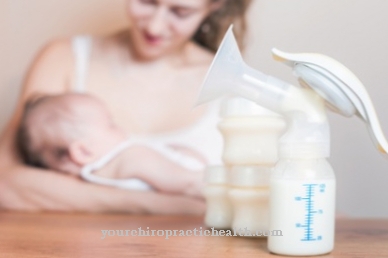Reusable menstrual hygiene products are becoming increasingly popular today. After all, they are also significantly more environmentally friendly and, in some cases, more health-friendly than single-use products. In addition to menstrual cups and sanitary towels are also used Menstrual sponges gladly used.
What is a menstrual sponge?

The menstrual sponge is also by the name Levantine sponge known because its growing area is on the Levantine coast. The menstrual sponge is an absolutely sustainable natural product: When harvested, the roots are preserved so that they can grow back until the next harvest.
The sponge is one of the oldest hygiene articles and is used in a similar way to a tampon. The user wears it in her vagina during menstruation. It has the advantage over conventional disposable tampons that it can be cleaned again and used over several menstrual cycles.
In addition, it is completely free of chemical pollutants. The sponges can also be worn with menstrual cups. Both products are available in pharmacies, in the pro familia advice centers or in online shops.
Shapes, types & types
Since the Levantine sponge is a purely natural product, it does not have a uniform shape. The size can also vary from product to product. On average, the menstrual sponge has a round to slightly oval shape and a size of five to seven centimeters. Products that can be cut to size are also available on the market. However, shape and size can change when wet. Cutting should therefore only be carried out after moistening and testing. If the sponge is perceived as uncomfortable, then the size is not yet correct.
If the bleeding is very heavy, two sponges can be inserted one after the other to soak up the large amount of blood. For a complementary use to the menstrual cup, the sponge should be cut so small that it fits into the menstrual cup.
Menstrual sponges are available in two different shades of color: unbleached they have a slightly brownish color and bleached they are yellow.
Structure & functionality
Menstrual sponges are not used immediately after purchase. They are first placed in a vinegar-water mixture with a ratio of 1: 2. Before each use, the sponge is moistened with water and then squeezed out.
Inserting the sponge works best with two fingers. It works in a very similar way to a tampon. Then it is pushed deeper into the vagina with the middle finger. When properly seated, the sponge takes on the shape of the vagina.
The sponge is cleaned at least every eight hours or even after it has soaked up with blood. The menstrual period is heaviest in the first two days. Then the menstrual sponge should be washed out and reinserted after two to three hours. Once the bleeding subsides, it can stay in the vagina for four to six hours. If used at night, it will not be cleaned until the next morning.
Removing and washing out is very straightforward. When the sponge is soaked with blood, it automatically slides towards the entrance of the vagina. So it can be easily removed with your fingers. But if it is not yet moist enough, it can be pressed down with the help of the pelvic floor muscles. When cleaning, the sponge is placed under cold running water. Immediate treatment with warm water would cause the blood to clot. This leaves a smear of blood that cannot be removed from the sponge. Before reinserting it, hold it under lukewarm water and squeeze it out again. The warm nature of the material is often perceived as more pleasant when it is inserted.
At the end of a bleeding, the menstrual sponge is cleaned so that it is as free of blood as possible - but also now first with cold, then with warm water. Under no circumstances should it be boiled or treated with strong detergents. Now it comes back into the vinegar water for a while so that all germs are killed. After drying, the sponge is kept in a cotton bag until the next bleeding.
You can find your medication here
➔ Medicines for menstrual crampsMedical & health benefits
Due to its natural origin, the Levantine sponge is absolutely skin-friendly and free of harmful substances. No TSS cases are known here either. TSS stands for Toxic Shock Syndrome, which can occur when using tampons. Finally, tampons can contain toxic residues that enter the body via the vaginal mucous membranes. They also leave some fibers in the vagina, which can lead to allergic reactions.
The menstrual sponge, on the other hand, is lint-free and at the same time so soft that it does not damage the vaginal mucous membranes when inserted. The natural material also ensures that the vagina does not dry out, as the sponge, unlike a tampon, only absorbs excess fluid.
In terms of use, the menstrual sponge is not disadvantaged compared to the disposable tampons: it is comfortable to wear, the sponge remains invisible in the vagina and cannot be felt by the wearer. However, if the bleeding is heavy, the sponge may be slightly less absorbent than a large tampon.
The maximum wearing time is eight hours, as is the case with conventional products. Whether at night or even while exercising - menstrual sponges can be worn at any time of the day. The purchase price may be a bit more expensive than a pack of tampons or sanitary towels, but the purchase will soon pay off. Finally, the Levantine sponges are also intended to be used over several cycles.
























.jpg)



